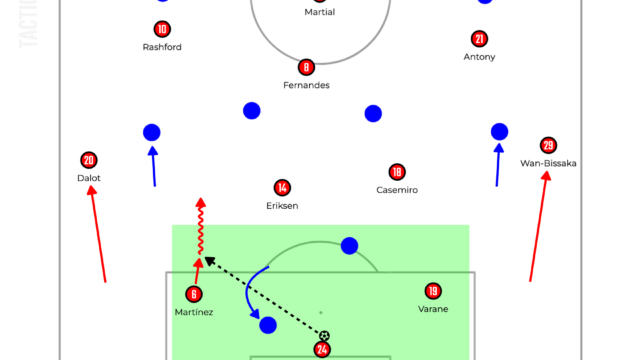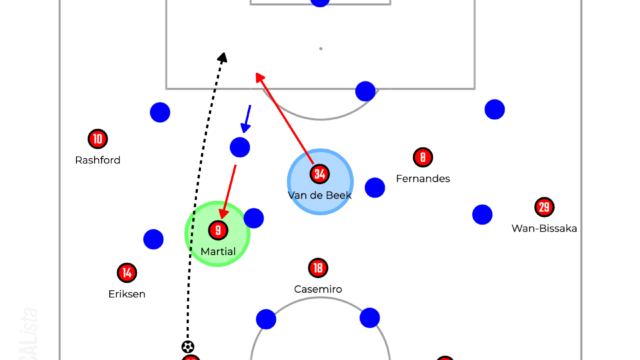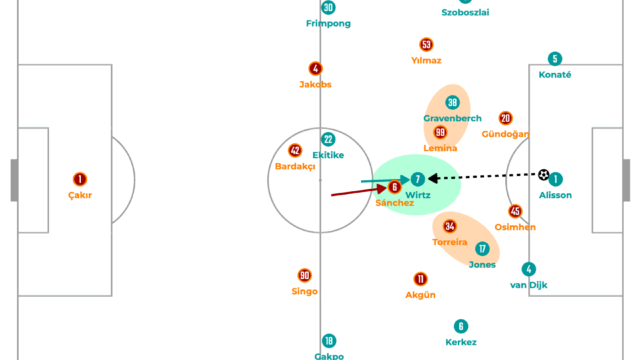How Marco Silva Utilises Rotations in Wide Areas? [Fulham FC Tactical Analysis 23-24]
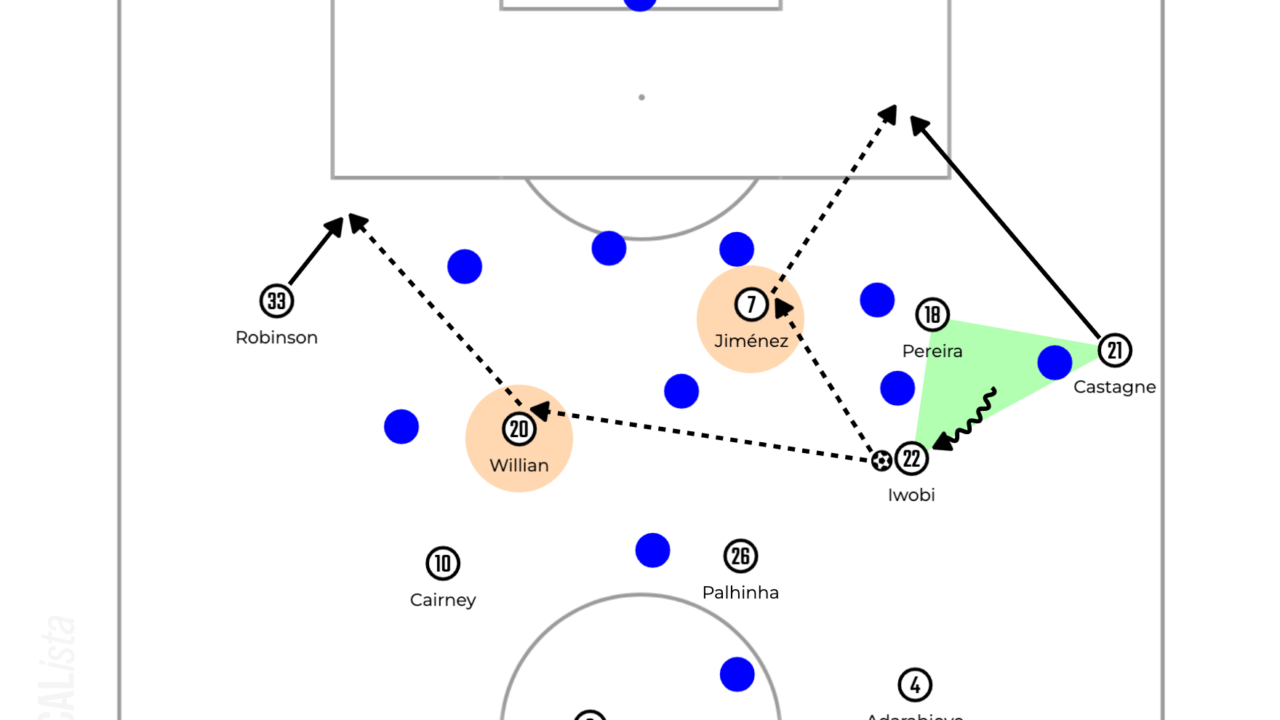
Overall
Marco Silva’s Fulham is one of the most organised and collective teams in Premier League. Although they are at the 13th place in the league right now, their fluid football with the 4-3-3 system is very enjoyable to watch. And of course, for coaches or analysts, it is extremely valuable to learn from them because they hardly rely on the individuals and can attack and defend as a team. In other words, as they do not have so many exceptional individuals, this can be one of the reasons why they are not doing as good as Brighton or Newcastle.
In possession, they are like Pep’s City or Bielsa’s Leeds a few years ago. From the basic 4-3-3, the triangles formed by the fullbacks, wingers and 8s in wide areas rotate effectively to beat the opposition pressing or break the defensive blocks down. Moreover, even the striker is a part of the rotations as he can drop back to create a passing lane to play through the middle when the opposition defensive midfielders are dragged out and split. They are basically playing with the ball very well, but they have recently conceded some goals from losing the ball in their own half when they tried to play out from the back. The reason of this is also going to be analysed in detail as well as their effective rotations.
Out of possession, they focus on defending as a team by setting a compact block in the midfield rather than going man for man. As a team, they force the opposition to play outside and lock them in. The back line is the key for them as the defenders keep shuffling across to apply pressure on the opponents from their best positions. However, it has been one of their weaknesses in the final third, as the ball side centre back often leaves his position in front of the goal, which caused a few troubles when defending crosses.
In this article, Marco Silva’s tactics at Fulham are going to be analysed in detail. I hope you will enjoy this article.

Build up
They sometimes play long, but basically they want to play out from the back in safer ways. The goalkeeper, centre backs and defensive midfielder are the main players to build up. However, when necessary, one of the 8s drops back to help the defensive midfielder João Palhinha. It has been recently the left midfielder Tom Cairney, but it can be Andreas Pereira or Alex Iwobi when he plays as the 8.

The diamond plus one aims to give either of the centre backs space to play split passes comfortably or step in with the ball. Especially, the left centre backs Calvin Bassey and Tim Ream are skilful enough to deal with the opposition pressure and carry the ball. Therefore, Palhinha often plays back to either of the centre backs to let him play forwards instead of turning forwards.
However, this is one of the reasons why they conceded so many goals after losing the ball in their own half. Compared with a pass from the defensive midfielder to the 8, a split pass from the centre back to the 8 is longer and risky.

If Palhinha can receive the ball from the centre back and turn forwards, he can play a safer pass to one of the attackers up front. However, the oppositions have recently marked Palhinha tightly, so the centre backs need to be able to solve this solution to reduce these kinds of goals. There is another transition-wise reason, but it is going to be discussed in the next chapter.
When playing out from the back, they try to find a spare player by rotating the players in wide areas. For me, they seem to share some principles regarding how to share space with each other instead of performing planned patterns. This is because they do not stick to a single pattern in a game, but the movements are various and spot on every time. Especially in build up phase, the different movements between the 8 and winger are crucial.

As in both examples shown in the illustration above, the wingers and 8s can make different movements both vertically and horizontally. The key is that the movements of 8s can drag the opposition defensive midfielders out of their positions, so there will be space in the middle of the opposition shape. This space can be used by the fullback underlapping to receive the ball set by the winger, the winger dropping inside or even the striker dropping back.
The striker Raúl Jiménez or Rodrigo Muniz can drop back to receive a split pass at the right time. Additionally, both can be a target when the goalkeeper or centre backs play long. This pattern is also one of their strengths when building up. Needless to say, the strikers’ ability to hold up or win the first header is excellent, but the other players are organised well to win the second balls.

The wingers make a run in behind to be ready for the ball flicked forwards and the 8s are closer to the second ball earlier than the opposition defensive midfielders. This is also a transitional phase, so being ready for the next action earlier than the opponents is very important and in this case, it is turning their body angles quickly and being ready for collecting the second ball.
After progressing into the midfield, the centre back Bassey or Ream often steps in with the ball, which is similar to their aim when playing out from the back. One of the advantages of the centre back carrying the ball forwards is that many players can move higher to receive the ball behind the opposition midfield line.

Usually, the 8 and fullback need to drop back when the centre back on the ball is under pressure, but like this, if the centre back can carry the ball forwards, the 8 and fullback can move higher to be positioned in between the lines. However, if these two players move higher, the space for the winger will be reduced. Therefore, he adjusts his position to gain more space.
The winger often comes inside beyond the 8 and find the space in the middle lane, which provides three passing lanes to the centre back on the ball. Additionally, by the 8 stepping higher, the opposition defensive midfielder often tends to follow him. This makes it difficult for the opponent to mark the winger coming inside, so the winger often becomes unmarked in the middle of the pitch and is found by the centre back.
As it was mentioned earlier, this kind of movement is not a pattern. Thus, the 8 sometimes comes into the middle lane and winger occupies the pocket between the fullback and 8. Essentially, they want to have various angles of passing lanes, so these three players will be in each lane behind the opposition midfield line after the centre back carries the ball forwards.
Overall, when building up, they let the centre backs progress the ball while the 8s and wingers rotate to receive split passes. The triangles of the fullbacks, wingers and 8s in wide areas are flexible to create and exploit space in the middle.
Final Third Attacking
In the final third, the basic structure is almost same. They control the possession with the centre backs and defensive midfielder, rotate the triangles in wide areas and find the striker to exploit the space in the middle. In addition to them, in the final third, the defensive midfielder Palhinha often leaves his position to offer a passing lane from one of the three players in the wide areas or even exploit the space up front. This can strengthen the threat around the box such as delivering a cross from the edge of the box to find Jiménez but can be a weakness in terms of managing the opposition counterattack.
From wide areas, they make the most of the rotations to create 2v1s or open space in the opposition defensive block. In the left flank, the 8 Cairney often stays deeper, so there is available space up front where the left winger Willian or Iwobi and left fullback Antonee Robinson rotate to exploit. In the right side, the 8 Pereira drops back more often in the final third, which encourages the right fullback Timothy Castagne to step forwards.

The combination of the winger and fullback in the left side is the main threat and Robinson not only overlaps the winger but also underlaps to exploit the space in the channel. When Willian plays as the left wing, as he often stays wider to receive the ball on feet to take on the opposition fullback, Robinson sometimes makes a run through the channel. Additionally, the one-twos between Robinson and the winger are often played to break the opposition back line and Willian often plays to the striker and receives a return pass set by him to penetrate the opposition block, which Brazilian players love to do in the final third. The thumbnail illustration of the article below is the example of this movement.
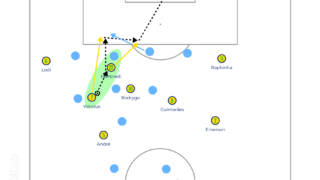
After exploiting wide areas, they can deliver various crosses into the box. Not only floated crosses but also fast cutbacks can be played to find an attacker at the edge of the box. Although Jiménez is strong in the air, low crosses can target other attackers in the box, so various crosses mean various target attackers.
When being stuck in a single side, it is essential to switch the ball to the other side or exploit the middle area and Fulham is also good at doing them. The ball is often switched by the bottom of the triangles who can be the dropped 8, inverted fullback or winger dribbling inside. But before switching the ball, they can have an option to exploit the space in the middle by finding the striker, which is also important not to be too simple in the final third.

As they can switch the ball to the other side between the opposition forward line and midfield line, the switches are quicker than playing around at the back line, which helps them to exploit the opposite side before the opponents can shuffle across. This is really important stuff and analysed in detail in the article below.
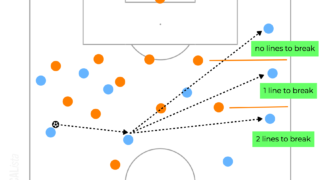
Similar to when playing out from the back, the defensive transitions are their weakness right now. When they can react quickly as a team, there will be no problems, but when they lose the ball badly or the first press is beaten, the structure at the back, which is often referred as rest defence, is not stable.
The most important player in defensive transition is the pivot Palhinha. However, as it was mentioned, in the final third, he often leaves the middle area, which means he is not in the best position when losing the ball. Additionally, he is often beaten too easily in front of the back line, which causes some troubles. The two goals conceded against Burnley are the great examples, although in these cases, they lost the ball in their own half.
To cover this problem, especially in the final third, the inverted fullbacks are crucial. When both fullback or at least the opposite side fullback can stay closer to Palhinha, he can help the pivot by protecting the space in front of the centre backs. Actually, when they can recover the ball in the opposition half, at least either of the fullbacks is near Palhinha. However, due to the flexible rotations in wide areas, the fullbacks are not always at the back. This is the general disadvantage of rotating players. To overcome this issue, Palhinha needs to be better at managing the defensive transitions.
Pressing
When the opposition tries to play out from the back, except for goal kicks, Fulham set a compact block in the midfield. Originally, the system is a 4-3-3, but one of the 8s Pereira moves higher and it often turns into a 4-4-2. From the compact 4-4-2, they force the opposition centre backs to play outside and quickly shuffle across to lock them in.
The striker and Pereira prioritise to close the gap to prevent the opponents to play through the middle. When either of the forward players jumps to apply pressure on the centre back on the ball, the other narrows in to mark the opposition pivot. If the opposition centre back on the ball manages to switch the ball to the other centre back, the forward players swap each role to keep applying pressure on the ball and marking the opposition pivot. However, just doing this again and again is comfortable for the opposition centre backs because they have less risks of losing the ball during making short passes each other. It increases the time of defending for Fulham and lets the opposition control the game. Therefore, the wingers seek to jump out to press on the opposition centre back who is about to receive a pass from the other centre back or goalkeeper.

If the winger can constantly step up, they can keep applying pressure on the ball, but the wingers have some different tasks. For example, they need to screen passing lanes to play through the gap between the winger and defensive midfielder. The more the wingers care about the space in the back of them, the less they can step forwards. The balance and timing are really important, and the wingers are playing difficult roles. If they fail to win the ball after stepping out, the team will be in troubles.

The illustration above shows what often happens after the winger cannot prevent the centre back from playing through. If the opposition centre back on the ball can play through, they can make the most of the overload in the wide area. Therefore, the wingers need to read the timing carefully, which sometimes results in hesitating to jump out too many times.
When the opposition has two defensive midfielders, it is difficult for the two forward players to manage to screen all passing lanes between them and the centre backs. Therefore, in this case, the other 8 often steps up to be positioned between the two forward players and the pivot Palhinha, which looks like a 4-1-3-2. This will help them to apply pressure on the opposition centre backs and defensive midfielders, but force the wingers to come inside, which makes the passing lane to the opposition fullback available or open the space in the middle if Palhinha cannot shuffle over on time.

Even though the more aggressive shape will create space in the shape, the back line is extremely organised, and the defenders can step up to apply pressure the opponents tightly. The centre backs aggressively follow the opponents in between the lines who drop back and the fullbacks can cover a long distance to apply pressure on the opposition fullbacks or wingbacks who receive the ball behind the wingers.
This can be done well thanks to the preparation of the back line. They control the back line really well and keep shuffling across as the line, which enables them to keep the compact shape and press on the ball from the best positions.
After winning the ball back, they try to play counterattacks quickly. The key players are the wingers who are positioned inside when defending.

Especially the opposite side winger is positioned narrower than the opposition fullback, so he can quickly link with the forward players in the middle lane to create an overload against the opposition centre backs. The winger can carry the ball forwards, run through the channel or combine with the striker or 8s to threaten the opposition goal as quick as possible.
Final Third Defending
When pressing, one of their strengths is identified that the back line can shuffle across constantly to be in the best positions. By shifting towards the ball side, it is possible to prevent the opposition from creating an overload and enable the defenders to apply pressure on the opponent on the ball quicker. However, in the final third, the priority should be defending the goal in the middle, so many teams get the centre backs to stay in front of the goal and the defensive midfielders to cover the channels. Marco Silva’s team can do this, but the tendency that the centre backs keep shifting across to cover the channels with leaving the space in front of the goal is stronger than the other teams.

This will cause some troubles such as the lack of the numbers in front of crosses or being forced to deal with difficult crosses due to the absence of the near centre back in front of the goal who usually clears the dangerous crosses away at the edge of the 6-yard box before they reach in front of the goal. If they can prevent the opponents from delivering a cross into the box, there is no problem, but if not, it is going to be more dangerous.
To be fair, this tendency has been found earlier this season, but recently it has been improved. The centre backs often stay in front of the goal or even if the near centre back leaves his position, the defensive midfielder drops back to fill the gap in the back line.

In the final third, they became now more collective than before by covering each position more smoothly. This will definitely help them to get more favourable results.
Conclusion
Fulham is one of the most collective teams in the league. The rotations in wide areas including the striker are their characteristic in possession and the tactics are working really well. When pressing, they hardly go man for man, but keep the compact shape as a team. And especially the back line is well controlled to maintain the compactness. Defending the final third had a clear weakness, but now it has been improved and they can close the gap more effectively. I believe Fulham is the best team to learn how to play as a team. Thanks for reading. I hope you have enjoyed this article.
